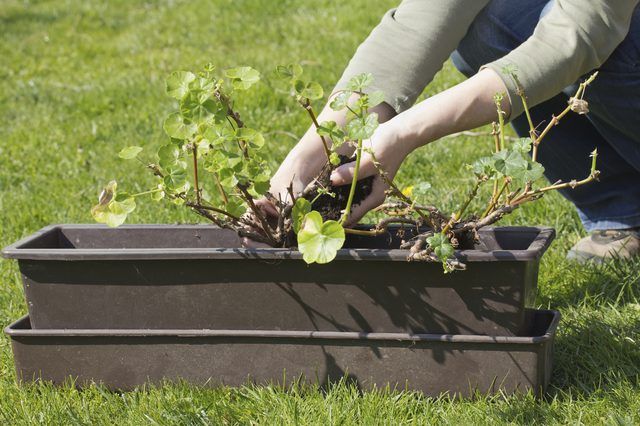Bulbs
Flower Basics
Flower Beds & Specialty Gardens
Flower Garden
Garden Furniture
Garden Gnomes
Garden Seeds
Garden Sheds
Garden Statues
Garden Tools & Supplies
Gardening Basics
Green & Organic
Groundcovers & Vines
Growing Annuals
Growing Basil
Growing Beans
Growing Berries
Growing Blueberries
Growing Cactus
Growing Corn
Growing Cotton
Growing Edibles
Growing Flowers
Growing Garlic
Growing Grapes
Growing Grass
Growing Herbs
Growing Jasmine
Growing Mint
Growing Mushrooms
Orchids
Growing Peanuts
Growing Perennials
Growing Plants
Growing Rosemary
Growing Roses
Growing Strawberries
Growing Sunflowers
Growing Thyme
Growing Tomatoes
Growing Tulips
Growing Vegetables
Herb Basics
Herb Garden
Indoor Growing
Landscaping Basics
Landscaping Patios
Landscaping Plants
Landscaping Shrubs
Landscaping Trees
Landscaping Walks & Pathways
Lawn Basics
Lawn Maintenance
Lawn Mowers
Lawn Ornaments
Lawn Planting
Lawn Tools
Outdoor Growing
Overall Landscape Planning
Pests, Weeds & Problems
Plant Basics
Rock Garden
Rose Garden
Shrubs
Soil
Specialty Gardens
Trees
Vegetable Garden
Yard Maintenance
How to Transplant Geraniums
How to Transplant Geraniums. Whether they are nursery plants moved to a garden or unusually colorful plants saved from winter freezes by being taken indoors, geraniums (*Pelargonium spp.*) transplant easily, provided they get plenty of moisture and light after their move. Keeping favorite plants and multiplying them from one season to the next...

Whether they are nursery plants moved to a garden or unusually colorful plants saved from winter freezes by being taken indoors, geraniums (Pelargonium spp.) transplant easily, provided they get plenty of moisture and light after their move. Keeping favorite plants and multiplying them from one season to the next makes sense economically.
Transplanting Nursery Geraniums
Geraniums bear flowers that are red, purple, pink, orange, white and shades between, with new bloom colors offered each spring. In addition to garden or zonal geraniums (Pelargonium x hortorum), ivy geraniums (Pelargonium peltatum) fill baskets and scented-leaved geraniums (Pelargonium spp.) line garden walkways. Wait until after the last freeze when the garden soil warms and the plants will receive six to eight hours of sunlight daily -- known as full sun to partial shade, depending on the length of daylight -- before you transplant nursery geraniums to a garden.
Before transplanting young plants, rough up roots that have grown dense against plastic sleeves, and tear off the loose rims of peat pots. Soak the peat pots thoroughly, and pull off each one's bottom if possible. Plant young plants in 6- to 12-inch-diameter pots filled with commercial potting mix or in garden locations in soil mixed with enough well-rotted compost or peat to provide excellent drainage. Space plants far enough apart so that each plant won't touch its neighboring plants or other objects when the plant is its mature size. Immediately following any transplanting, soak the ground around your geraniums to encourage root growth.
Moving Geraniums
Any time geraniums outgrow their pots or need more light in their garden locations, their flowering slows, and it is time to move them, although it's best to wait until the following spring for garden plants. Before transplanting, trim off all the flowers and leggy branches with scissors or hand pruners because the plants need energy to generate new roots. Always sanitize cutting tools before and after using them, wiping them with a solution that is one-half water and one-half rubbing alcohol to avoid spreading pathogens.
Lift each geranium out of its location by using a cultivator or garden fork, and put the plant into a pot full of fresh potting soil or in a new planting hole in a garden; set the plant at the same soil depth at which it sat previously. Planting deeper forces the geranium to take extra time growing new roots. Immediately after planting, water a potted plant's soil until water drains out the pot's bottom drainage hole, or water an in-ground plant's soil to a depth of 6 to 8 inches. Water daily if doing so is necessary to keep the soil evenly moist -- not soggy -- for one or two weeks, ensuring roots grow.
Transplanting for Transition
Although garden geraniums and their relatives usually are treated as annuals, they are actually tender perennials, hardy in only U.S. Department of Agriculture plant hardiness zones 10 through 11. No reason exists to dig up, clean, bag and hang geraniums -- as you may flowering bulbs -- when you can simply roll a pot of geraniums indoors to a south or east window, give the plants supplemental light and enjoy their blooms throughout the cold rains and/or snows of winter. Also, geraniums in outdoor gardens can be transplanted indoors in fall and moved back outdoors the next summer.
Transplanting for Overwintering
Before the last frost, when nighttime temperatures drop and your furnace goes on for the first time, prepare your garden-dwelling geraniums for winter. Dig up the geraniums by using a garden fork. Pinch all remaining flowers between your thumb and forefinger to remove them; more flowers will appear if you put the plants indoors in front of a sunny window. Knock the soil off to loosen the root balls, and plant each geranium in an 8- or 10-inch-diameter pot filled with commercial potting mix. Ensure each pot has a bottom drainage hole. Cut each plant's top back to 6 inches tall, and water the soil until water runs out the pot's bottom.
You can increase your geranium collection by removing all except the top leaves of the plants' trimmings and planting those trimmings in moist sand or vermiculite. Remove the tips of new shoots on both old plants and new plant starts several times throughout winter to encourage bushy growth.